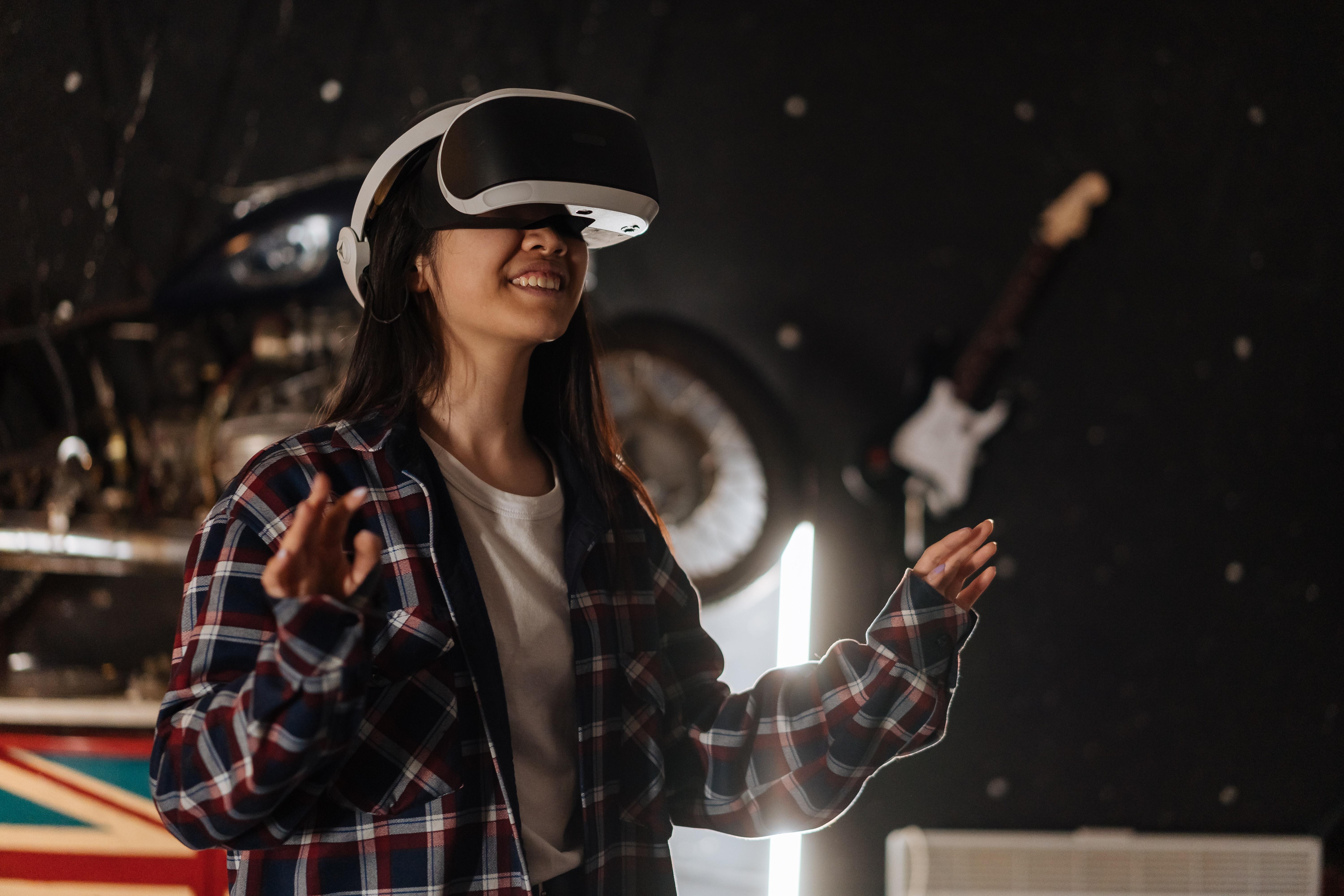Top 7 Interactive Marketing Ideas
February 17, 20237 Best Interactive Services to Engage Brand Customers
In today’s digital age, engaging customers is more important than ever. With so many brands competing for customer attention, it’s crucial to create interactive experiences that captivate and retain customer attention. Brands that can effectively engage their customers have the potential to build a loyal customer base and create long-term success.
There are many interactive services that brands can use to engage with their customers. Social media engagement, interactive videos, virtual and augmented reality, gamification, live chat, interactive email, and personalization are all powerful tools that can be used to create engaging and personalized experiences. By using these tools, brands can create memorable experiences that customers will remember for years to come. In this blog post, we’ll explore seven of the best interactive services that can help brands connect with their customers.
1. Social Media Engagement
Social media engagement is a powerful tool that brands can use to connect with their customers and build a community of loyal fans. Social media platforms like Facebook, Instagram, Twitter, and LinkedIn offer a range of features that brands can use to engage with their followers, including running contests, hosting live events, and offering exclusive deals.
One of the most important aspects of social media engagement is creating content that resonates with your target audience. This can be done by understanding your audience’s interests, preferences, and pain points. By creating content that is relevant and valuable to your audience, you can increase engagement and build a loyal following.
Another important aspect of social media engagement is interacting with your followers. This means responding to comments, messages, and mentions in a timely and personal way. By showing your followers that you care about their opinions and feedback, you can build a stronger relationship with them and create a sense of community.

Running contests and giveaways is another effective way to engage with your followers on social media. This can be done in a variety of ways, such as asking followers to submit their own content, sharing a post to enter, or tagging friends to enter. Contests and giveaways can help to increase engagement, attract new followers, and build excitement around your brand.
Live events, such as webinars or Q&A sessions, are another powerful way to engage with your followers on social media. These events allow you to connect with your followers in real-time and provide valuable insights and information. By hosting live events, you can build trust and credibility with your followers and create a sense of community.
Finally, offering exclusive deals and discounts to your social media followers can be an effective way to incentivize engagement and build a loyal following. This can be done by sharing a special code or link that can only be used by social media followers or by offering early access to new products or services
2. Virtual Reality
Virtual reality (VR) is a powerful tool that brands can use to engage with their customers in an immersive and interactive way. VR involves using a headset or other devices to create a simulated environment that the user can interact with. This technology allows brands to create virtual experiences that customers can engage with in a way that feels real and interactive.
There are many different ways that brands can use virtual reality to engage with their customers. One of the most popular applications of VR is product demos. Brands can use VR to create virtual environments where customers can interact with their products in a realistic way. For example, a car company might use VR to create a virtual test drive experience where customers can get a feel for the car’s features and handling.

VR can also be used to create virtual store experiences. This allows customers to browse products and make purchases in a virtual environment that simulates a real-world shopping experience. This can be particularly useful for brands with physical stores that want to expand their reach and create new opportunities for customers to engage with their products.
Another application of VR is in creating virtual games and experiences. Brands can use VR to create immersive and interactive games that allow customers to engage with their products in a fun and engaging way. This can be particularly effective for brands that target younger audiences or want to create a sense of excitement and playfulness around their brand.
Finally, VR can be used to create virtual events and experiences. This can include things like virtual trade shows, virtual conferences, or virtual tours of a brand’s facilities. By using VR, brands can create experiences that are more engaging and memorable than traditional online events and can help to create a sense of excitement and exclusivity around their brand.
3. Interactive Videos
Interactive videos are a type of video content that allows the viewer to engage with the video in a more immersive and interactive way. Unlike traditional videos that play from beginning to end without any interaction from the viewer, interactive videos allow viewers to interact with the content, making it more engaging and personalized.
Interactive videos can take many different forms. Some examples of interactive video features include clickable hotspots, which allow the viewer to click on specific areas of the video to learn more about a product or topic. Other examples include quizzes or surveys, which can be integrated into the video to test the viewer’s knowledge or gather feedback.
One of the key benefits of interactive videos is that they can provide a more personalized experience for the viewer. By allowing the viewer to choose their own path through the video content, interactive videos can provide a more tailored experience that is customized to the viewer’s interests and preferences.

Another benefit of interactive videos is that they can be more engaging and memorable than traditional videos. By allowing the viewer to actively engage with the content, interactive videos can create a more immersive and interactive experience that is more likely to be remembered and shared.
Interactive videos can be used in a variety of contexts, from marketing and advertising to training and education. For example, an e-commerce company might use an interactive video to showcase its products and allow customers to interact with them in a more immersive way. A training company might use an interactive video to provide hands-on training and feedback to learners.
4. Augmented Reality
Augmented reality (AR) is a technology that overlays digital information or virtual objects onto the real world. It allows users to experience a blend of the physical and virtual world, making it a powerful tool for brands to engage with their customers in an interactive and immersive way.
AR can be experienced through a range of devices, including smartphones, tablets, and AR glasses. Using these devices, users can view the real world through the device’s camera, with digital objects and information superimposed onto the view.
One of the most common applications of AR is product visualization. Brands can use AR to allow customers to view and interact with their products in a more immersive and interactive way. For example, a furniture company might use AR to allow customers to view how a new piece of furniture would look in their home, by superimposing a digital image of the product onto a live video feed of the customer’s home.

Another application of AR is gamification. Brands can use AR to create interactive games and experiences to engage customers in a fun and exciting way. For example, a sports brand might use AR to create an interactive game that allows customers to play a virtual version of their favorite sport in a real-world setting.
AR can also be used for location-based marketing. Brands can use AR to create digital experiences that are tied to specific physical locations, such as landmarks or retail stores. For example, a retail store might use AR to create a scavenger hunt game that takes customers through the store, encouraging them to engage with different products along the way.
5. Live Chat
Live chat is a customer support service that allows customers to interact with a brand in real time through a chat interface. It allows customers to get quick and personalized support for their queries or issues, without having to wait for a response via email or phone.
Live chat is usually provided on a brand’s website or mobile app, and is staffed by customer service representatives or chatbots that are trained to handle customer inquiries. When a customer initiates a chat, they are typically greeted by a chatbot or a live customer service representative, who can help to answer their questions, resolve their issues, or provide other types of support.
Live chat is a popular customer support option because it allows customers to get quick and personalized support, without having to navigate through an automated phone system or wait for a response via email. It also allows brands to handle customer inquiries more efficiently, as chat representatives can handle multiple inquiries simultaneously, reducing the need for additional staffing.

In addition to customer support, live chat can also be used for sales and marketing purposes. Brands can use live chat to provide customers with product recommendations, promotions, or other types of marketing messages. By providing personalized recommendations and support, brands can create a deeper connection with their customers and drive engagement and sales.
Overall, live chat is a valuable tool that brands can use to provide quick and personalized customer support, as well as to drive engagement and sales. By offering this service on their website or mobile app, brands can improve their customer experience and create a more positive relationship with their customers.
6. Interactive Email
Interactive email is a type of email that allows the recipient to interact with the content of the email, making it more engaging and personalized. Unlike traditional emails that are static and passive, interactive emails can include features such as clickable buttons, sliders, quizzes, and other interactive elements that allow the recipient to engage with the content of the email.
Interactive emails can be used in a variety of contexts, from marketing and advertising to customer support and training. For example, a retail company might use an interactive email to showcase its latest products and allow customers to purchase directly from the email. A training company might use an interactive email to provide learners with quizzes and assessments to test their knowledge.
One of the key benefits of interactive emails is that they can increase engagement and conversion rates. By allowing recipients to interact with the content of the email, interactive emails can create a more personalized and immersive experience that is more likely to capture the recipient’s attention and drive them to take action.

Another benefit of interactive emails is that they can provide valuable data and insights into the recipient’s behavior and preferences. By tracking how recipients interact with the email, brands can gain insights into which content and features are most effective, allowing them to refine and improve their email campaigns over time.
However, it’s important to note that creating interactive emails can be more complex and time-consuming than creating traditional emails. Interactive emails may require additional coding or design work, and may not be compatible with all email clients or devices.
7. Personalization
Personalization is a marketing strategy that involves tailoring marketing messages and experiences to the specific needs and preferences of individual customers. It involves using customer data and insights to create targeted and relevant marketing messages and experiences that resonate with the individual customer.
Personalization can take many forms, from simple personalization of a customer’s name in an email to more complex personalization that uses data on the customer’s browsing history, demographics, and past purchases to deliver targeted product recommendations or promotions.

One of the key benefits of personalization is that it can improve the customer experience by providing more relevant and tailored content. By tailoring marketing messages and experiences to the specific needs and preferences of individual customers, brands can create a more personalized and engaging experience that is more likely to capture the customer’s attention and drive them to take action.
Personalization can also help to build customer loyalty and trust. By showing customers that a brand understands their needs and preferences, and is willing to tailor its marketing efforts to meet those needs, brands can create a deeper connection with their customers and build long-term loyalty.
However, it’s important to note that personalization must be done in a responsible and ethical way. Brands must be transparent about the data they are collecting and how it is being used and must give customers the option to opt out of data collection and personalization efforts if they so choose. Failure to do so can lead to a loss of trust and reputation damage.
Conclusion
we have explored seven different interactive services that brands can use to engage with their customers, including social media engagement, virtual reality, interactive videos, augmented reality, live chat, interactive email, and personalization.
Each of these services has its own unique strengths and benefits, and can be used in a variety of contexts to improve the customer experience and drive engagement and sales. Whether it’s using social media to build a community of brand advocates, or using virtual reality to create immersive experiences for customers, brands that embrace these interactive services are more likely to succeed in today’s fast-paced business environment.
In conclusion, by incorporating these interactive services into their marketing and customer engagement strategies, brands can create more engaging, personalized, and memorable experiences for their customers, and build the types of relationships that drive long-term success.

